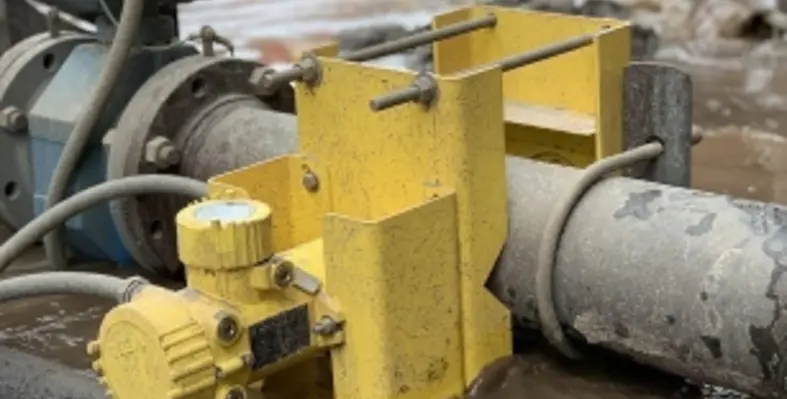Alexis Alexander, product manager, VEGA, explains how automation in mining has improved the measurement of critical parameters such as the pressure, flow and density of slurry
Automation in the mining industry, like in any other industry, has provided huge benefits in process optimisation and increasing profitability. In addition to extracting valuable minerals, technology has helped evolve transporting these ores from wheel carts to trucks to trains and now using pipelines.
A common mode of conveying materials to and across a processing complex would be in the form of slurries through pipelines. Slurries are just an efficient method of transporting , where the ?solids of interest? are suspended in a liquid carrier and pumped between different points using a device like a centrifugal pump. Blending of the ores with the carrier fluid are done carefully before pumping, to maintain a good ratio of solids to liquid. A highly dense slurry would lead to difficulty in conveying the product while a light slurry would mean inefficient transportation.
Critical parameters that are normally measured include pressure, flow and density. These measurements are highly challenging due to the abrasive nature ofthese products, making operators cautious while designing and selecting the devices as they are subjected to a heavy toll. An improvement in these measurement technologies would reduce costs significantly and improve reliability.
Pressure measurement
Pressure is an important and critical parameter that is measured across different stages. Using electronic differential pressures transmitters on the suction and discharge of pumps provides static and differential pressure. This information helps avoid dry runs, cavitation, leaks, sealing, vibration and mechanical issues. This, in combination with the flow rate, can help operators run the pumps at the best efficiency curve. As these pressure transmitters are subjected to pressure shocks and as the overload pressure of metal diaphragm sensors are limited, overpressure protectors are added to the hookup. On the other hand, on using ceramic based pressure transmitters, these extra accessories are not needed due to their high overload resistance which can be up to 200 times than of metal diaphragms.
Pressure transmitters are also installed along the pipes to measure the pressure drops that can occur. An important reason to use ceramic sensors on the pipes is the abrasion protection it offers. In aggressive process environments, metallic measuring cells can readily fail through a variety of stresses such as abrasion, impacts, friction, corrosion and high temperatures. CERTEC ceramic cells are exceptionally hard and abrasion resistant: 10 times harder than stainless steel. This makes them the ideal choice for slurry containing metallic debris or sandladen media. Even strong cleaning agents or mechanical cleaning with a brush have no effect on the measuring cell.
Density measurement
Radiometric densitometers offer a noninvasive measurement on these highly demanding slurry pipelines. Intrusive density measurement are difficult to isolate for any maintenance which is often needed due to the stressful conditions they are subjected to. Noninvasive radiometric measurements are designed using a gamma source which would radiate the other side of the pipe through the slurry. A scintillation based detector on the opposite end measures these radiations to infer the density based on the amount of absorption of these gamma waves. Simply put, lower the slurry density, higher will be radiation detected. Density measurements using radiometric technology can be very accurate even beyond what is needed for a slurry density measurement. Hence, these systems are carefully designed to provide just enough radiations sufficient to achieve an optimum control.
As these devices are demanded more in harsh environments, newer models available in the market have internal electronics that are completely encapsulated and protected from the mine?s dirty, harsh environment. These designs have extended the life of these detectors, hence needing minimal maintenance.
Instrumentations like the Ceramic pressure transmitters and the noninvasive densitometers cover a small, yet significant measurement in slurry pipelines. Along with improvements these technologies offer, automation specialists also prefer them as they provide a huge advantage in interoperability with plant asset management based out of FDT/DTMs and standards like NAMUR. Standardising all instruments on these grounds have provided great benefits to operators in spending less costs on maintenance and stocking less spares.




